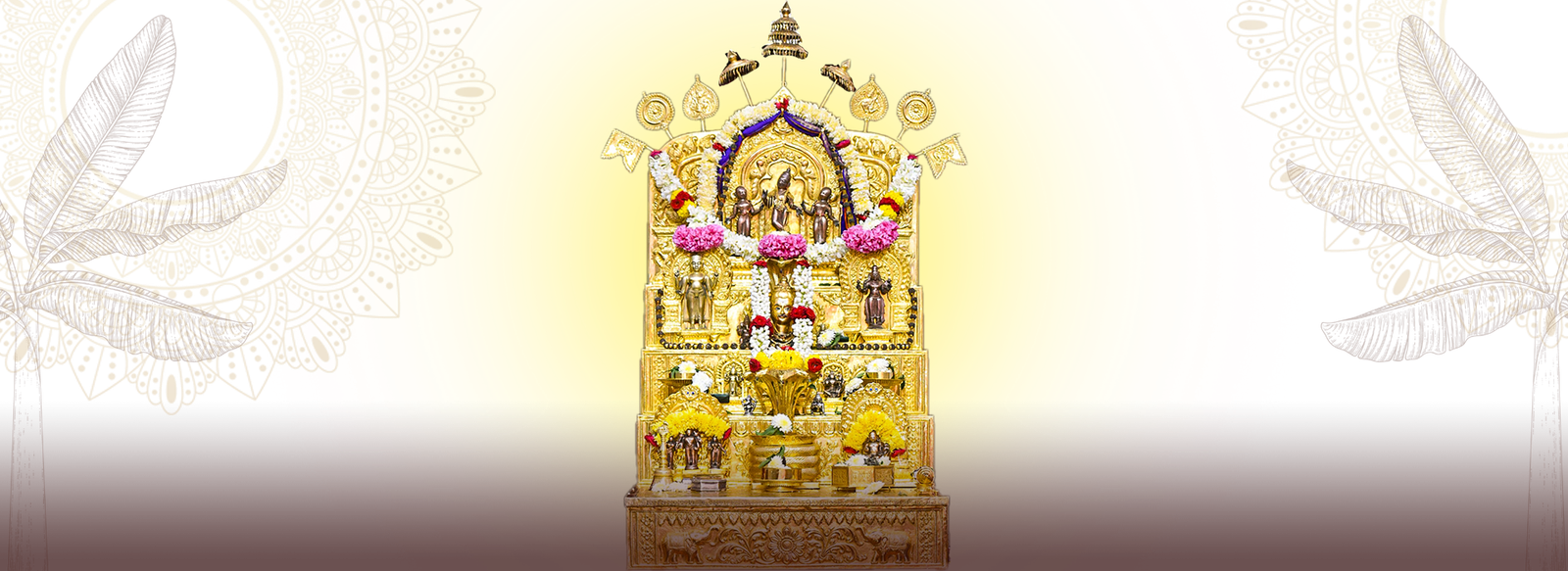
PANCHAYATANA PARAMPARA
भवानी शङ्करौ वन्दे श्रद्धा विश्वास रूपिणौ।
याभ्यां विना न पश्यन्ति सिद्धाःस्वान्तःस्थमीश्वरम्।
Shree Saunsthan Gaudapadacharya Kavale Math’s Shree Bhavani Shankar and Saha Panchayatan devatas in the Suvarna peeth
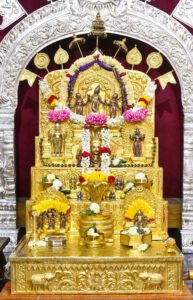
Shree Rukmini, Shree Gopalkrishna and Shree Satyabhama
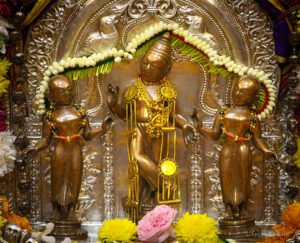
Shree Vishnu
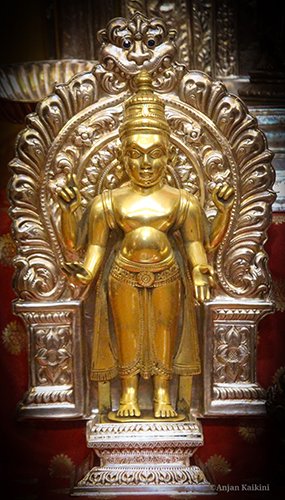
Shree Ganapathi
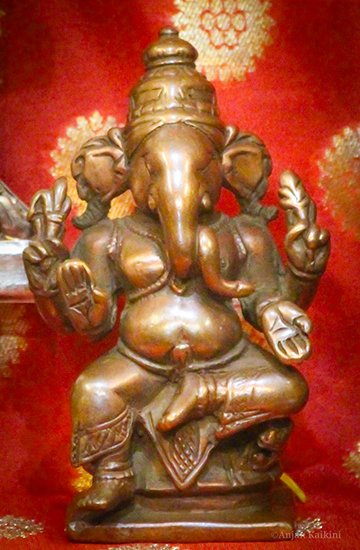
Shree Bhavani Shankar
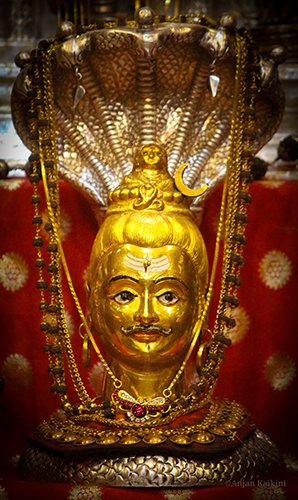
Shree Vedavyas
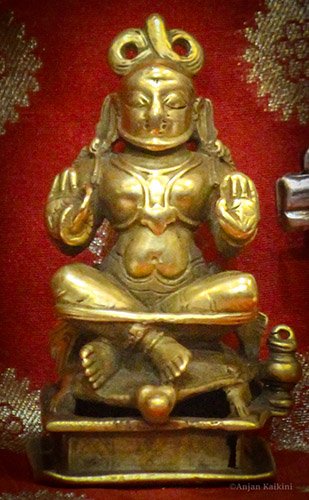
Shree Gadha Padmanabha
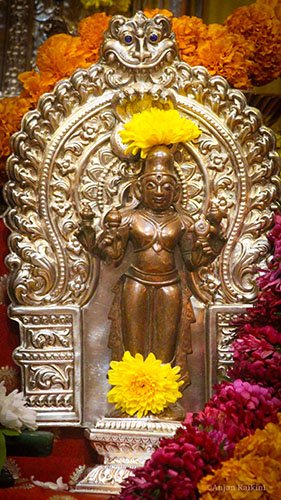
Shree Vishnu
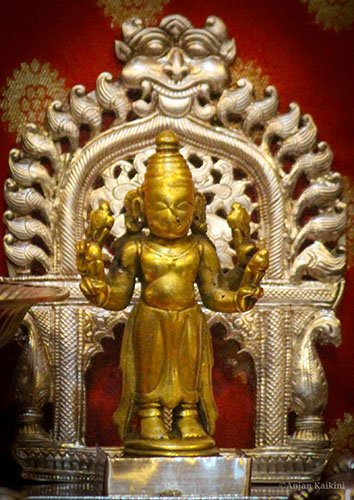
Shree Bala Ganapati
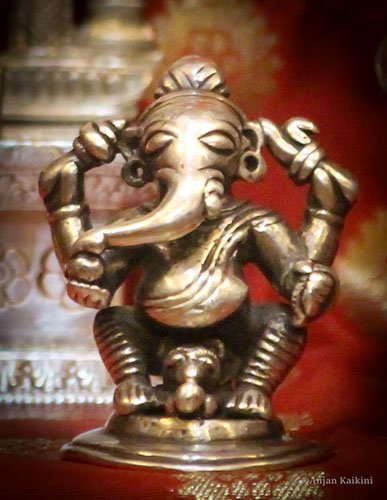
Shree Uma Maheshwar
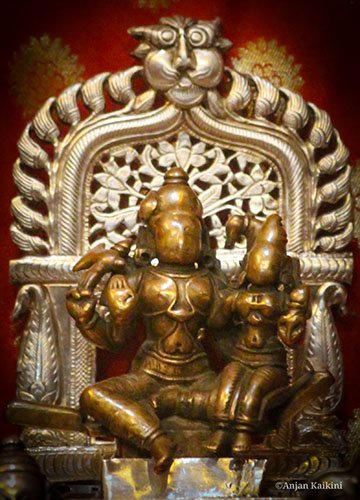
Shree Balakrishna
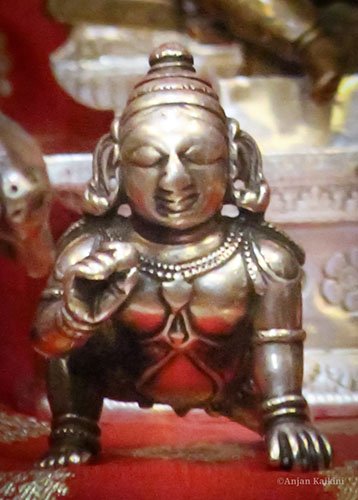
Shree Devi Bhoodevi and Shree Venkataramana
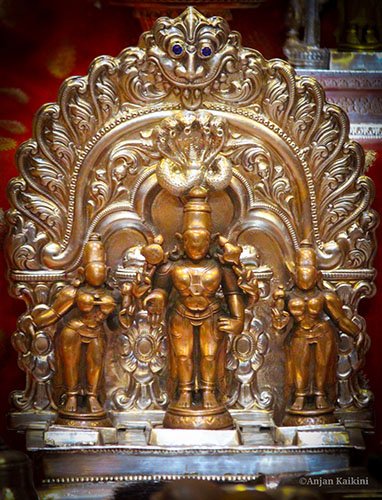
Shree Sheshanaga
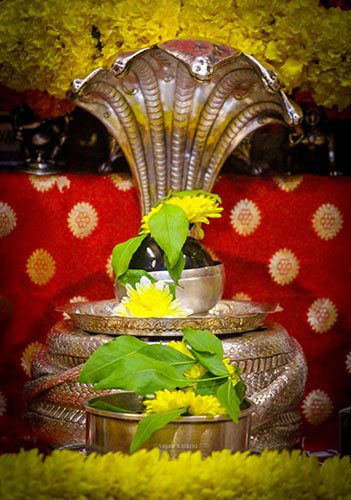
Shree Kodandarama
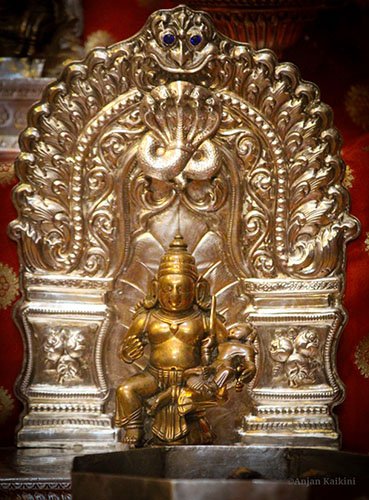
Shivalinga, Banalinga, Shree Chakra and Saligrama
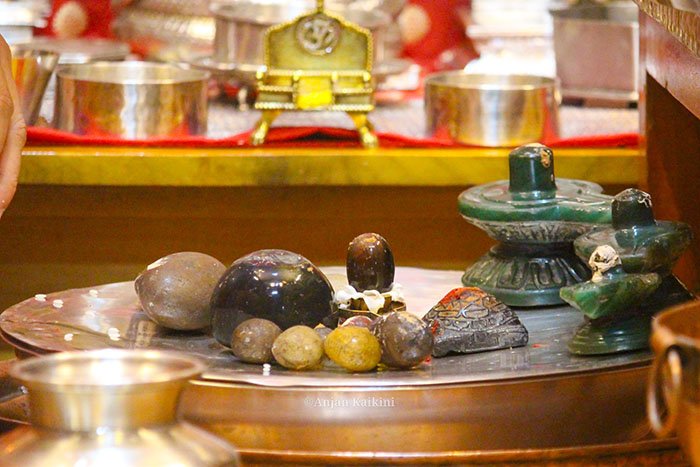
The deities worshipped by Kavale Mathadeesh Shreemat Shivanand Saraswati Swami Gaudapadacharya during Trikala (Morning, Noon and Night) puja everyday illustrating the Panchayatana puja system. Panchayatana Pooja consists of the worship of five deities arranged in a quincunx pattern: Vishnu Dev, Shiva Dev, Surya Dev, Ganesha Dev, and Sri Shakti Devi. This Panch-Deva Upasana of the Smarta tradition is mentioned in the Mahabharata and Vaishnav Sattvika Puranas like the Padma Purana and Narada Purana. In this system, one of the five deities is considered the primary deity, with the others complementing and leading to the primary deity. The arrangement of the deities symbolizes the interconnectedness and harmony of the different aspects of the divine.
In the Kavale Smarta sampradaya, the central deity is Bhavani Shankar (Shiva-Ishta Devta), surrounded by four others:
Vishnu: The preserver and protector, embodying the qualities of sustenance and harmony.
Ganesh: The remover of obstacles, ensuring the removal of hindrances in the spiritual journey.
Durga: The primordial energy and divine mother.
Surya: The radiant Sun God, symbolizing the life-giving and illuminating force.
Each deity represents specific attributes and cosmic energies, and their combined worship allows devotees to seek blessings and grace from various facets of the divine presence. Occasionally, Kartikeya Dev is included as a sixth deity (Shanmata) to seek blessings, guidance, and purification, paving the way for spiritual growth and ultimately moksha. This practice is considered a key element of the Smarta tradition. It has been accepted and adopted by the Gaud Saraswat Brahmins, Rajapur Saraswat Brahmins, Saraswat Brahmins. Kavale Math’s Panchayatana Puja Parampara is to maintain the unity of Hindu Dharma and prevent divisions based on the worship of specific deities. The practice teaches that worshipping any deity ultimately leads to the one non-dual supreme reality. The Mathadheesh of Kavale Math carries the Panchayatan deities wherever they go.